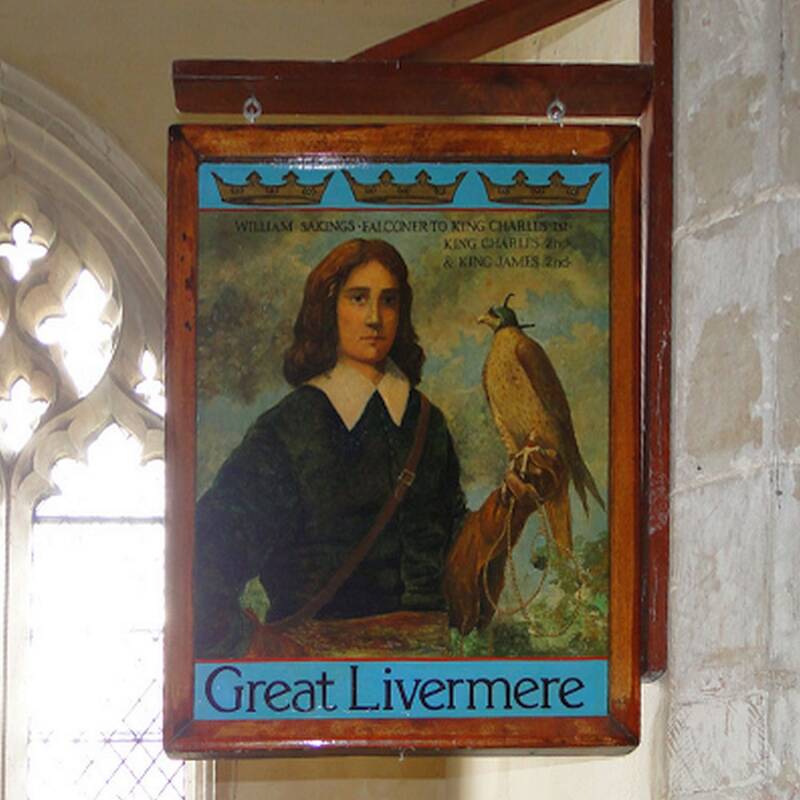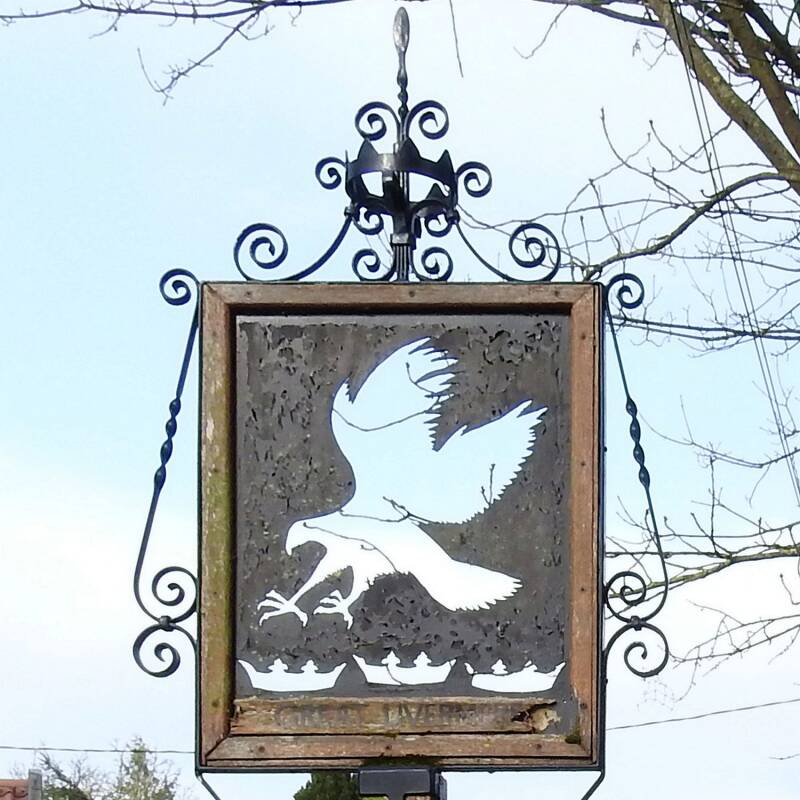Great Livermere
The first three photographs were taken by Adrian S Pye.
The Sign
The original village sign can now be found hanging in the church of St Peter and was painted by Tom Taylor who lived in the village. It commemorates William Sakings, with the falcon on the back.
The other two signs show the same theme, that of a falcon descending on its prey, relating to William Sakings. The first sign being made of wood inside a wrought iron frame, which was replaced more recently with a metal insert.
William Sakings whose headstone cites that he was the falconer (forkner) to King Charles I, II and James I. His grave can be found in the graveyard at Great Livermere, St Peter. The three kings are represented by the three crowns below the falcon on the later signs.
The Name and Population
The population was 226 at the 2011 census. It was called Leuuremer 1042-1066, Liuermera in 1086 and Liuermere in 1095. The name means "The liver-shaped pool, or pool with thick muddy water", from Old English. However, the first part could mean "rush, reed or iris". the 'Great' was added to distinguish it from Little Livermere, probably as early as 1086.
Other Points of Interest
The grade I listed church of St Peter’s contains wall paintings, a three-decker pulpit, and one of the finest organs in the area.
M.R. James, the novelist was a resident here.



